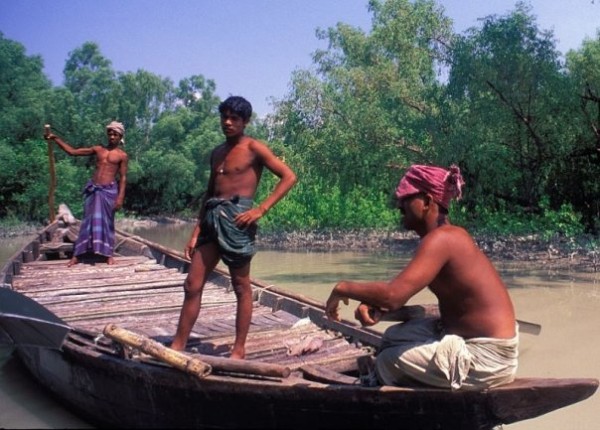Recently, Bangladesh Power Development Board and the National Thermal Power Corporation of India signed a contract to build, under joint venture, the 1320MW Rampal Coal Fired Power Plant near the Sundabans. This is an invitation to a developmental disaster, one which can help destroy one of the world’s natural wildlife wonders.
By Md. Sariful Islam and Shah Arafat Hossain
Department of Development Studies, University of Dhaka.
Bangladesh is energy hungry. Severe power shortages impede overall development of the country besides upsetting people’s daily life. We cannot isolate ourselves from development in this era of science but, needless to say, we need development but not at the cost of life, or degradation of environment, or bring on developments that incur social and economic losses. For sure we cannot go for developments which will result in self-destruction. Considering the importance of electricity while ignoring the socio-environmental aspect will surely take us on a false road that hides behind a mask of development. We do not deny the importance of development but it must be in tune with the environment so that the human being can survive on our blue planet.
When a development project fails to take into account adverse consequences, the potential for environmental degradation, or fails to take into account future needs, or if the mandatory Environmental Impact Assessment is not done or not done properly, if rules and laws are violated, or the builders fail to solicit and take into account peoples’ opinion, there may well be a huge socio-economic loss and in extreme cases the ‘development project’ can result in a development disaster which severe consequences must to be borne from generation to generation
In this case, we have the Sundarbans, the largest mangrove forest in the world, and designated a place of global heritage declared by UNESCO in 1997. The area is rich in biodiversity. It is the home to Royal Bengal Tiger, crocodiles, spotted deer, mammals, al kinds of insects, jungle fowl, wild boar, the theses monkey, many different species of birds and fishes. The forest is a natural shield against natural disasters thanks to the effects of the vegetation on tidal surges in the typhoon season.
The Sundabans site chosen for this project is a very controversial one. The information about the distance of the plant from the Sundabans varies from 14 to 9 kilometers. Experts have given opinion that there is no country in the world which gives permission to construct a power plant within 15 to 20 kilometers of forests or habitats.
Environmentalists have rejected the Environment Impact Assessment (EIA) report. They described it as unfair, fraudulent, ill-motivated and anti-national. According to experts, the EIA is not at all satisfactory as it is flagrantly flawed. There are too many “maybes and mights” and “shoulds and woulds” for an EIA paper which, if accepted, will certainly lead to troubles. The experts are completely against this type of ‘red category’ project within such an Environmentally Critical Area.
The government themselves by a gazette in 2010 declared the surrounding 340 hectres, 560 hectres and 170 hectres – including the river Passure as “Wildlife Sanctuary”, in part for protecting rare species of dolphins.
Experts accuse the government of violating five national and international rules. It has been mentioned in the EIA that the waters of Passur river will be used for refinery purposes and then it will be let back into the river. But the water returning to the river will be both higher in temperature and mixed with various toxic elements that will damage the flora and fauna dependant on the river. The ecological system of the river will be damaged totally.
Coal-fired plants contribute to pollution not only by emitting a huge amount of carbon dioxide and other toxic gases but also by producing ash. This coal-based electricity plant will pollute the environment of the vicinity by emitting poisonous sulphur and nitrogen gases which will cause acid rain. Then again, the dirty smoke produced from the plant will impede the movement of commercial ships at Mongla port. The ships which will carry the coal for the plant will also cause damage to Sundarbans by dumping their waste, and by their smokestack emissions, and through their movement within the narrow Passur river which does not contain sufficient space for ship transits.
The entirety will create a negative impact on the lifestyle of the people who rely on the forest and those they service in the wider area. These are fishermen, wood cutters, honey collectors and more, all dependant on a traditional hunter-gatherer livelihood and on the river and the forest who will be jobless and their families will be placed in an even more difficult situation than their precarious life provides even today.
The Rampal project will also cause severe health hazards. Even in the EIA, there was mentioned the worry about diseases such as pneumonia that can occur through the effects of those gases and that aid in the spreading of bacteria. The acid rain causes tress top-dying syndrome and the plant will be continually polluting the water and air and all life living in the area will be negatively affected.The discharged liquids can mix with drinking water.
The cost of electricity produced by that plant has also been questioned. Experts argue that government can obtain electricity at a cheaper rate from local plants than can be got from this joint venture with India. So, it is a case of higher costs and detrimental by-products which combination no country can afford. We see it as a ‘Frankenstein’s Monster’ project which destroys its creator. The project is nothing but an invitation for a Development Disaster.
By Md. Sariful Islam and Shah Arafat Hossain
Department of Development Studies, University of Dhaka.










